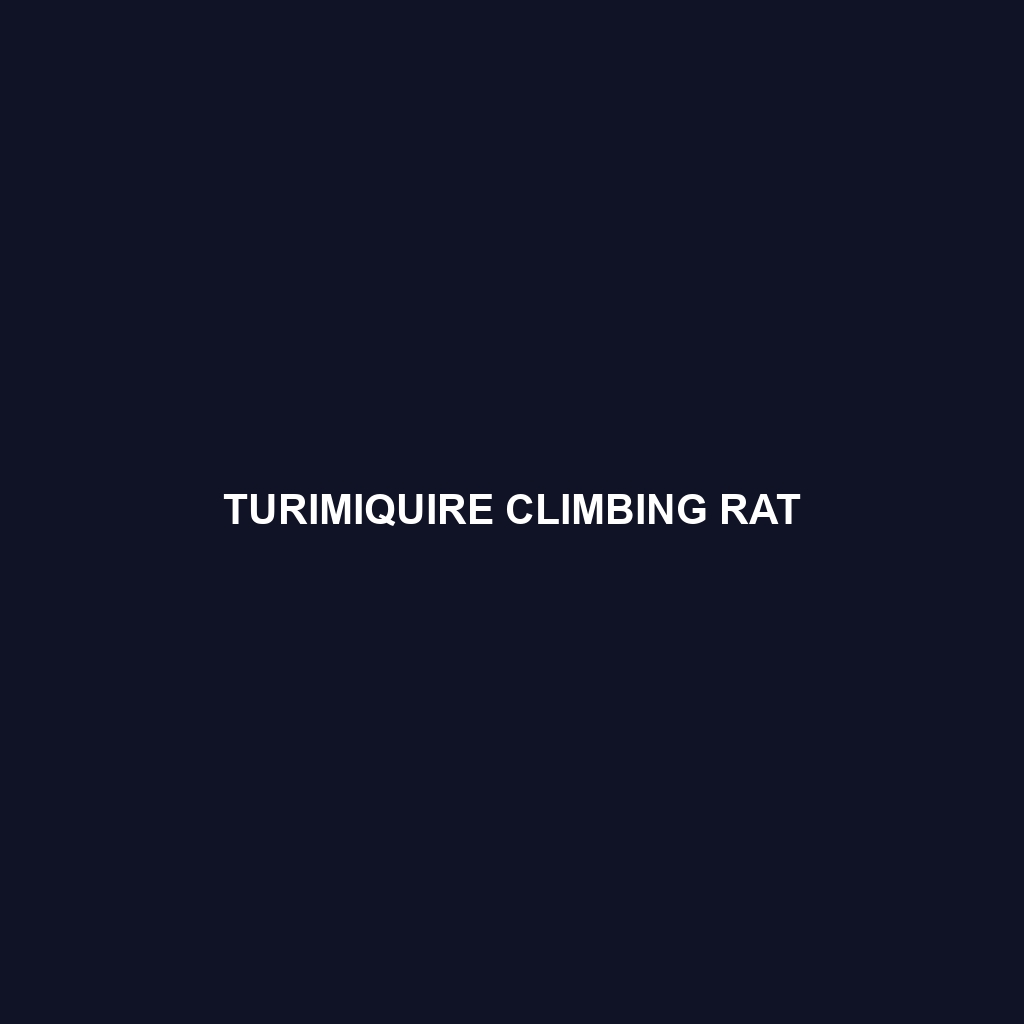Turimiquire Climbing Rat: A Comprehensive Species Description
Common Name: Turimiquire Climbing Rat
Scientific Name:
Habitat
Turimiquire Climbing Rat is primarily found in the dense, tropical forests of Venezuela, specifically in the Sierra de Turimiquire region. This species thrives in mountainous and arboreal environments, where the humidity and rich biodiversity provide suitable conditions for its survival. The rat’s habitat typically consists of lush undergrowth and canopy cover, making it well-adapted to life in the trees.
Physical Characteristics
The Turimiquire Climbing Rat is a medium-sized rodent, measuring approximately 20 to 30 centimeters in length, excluding the tail. Its fur is predominantly a rich brown color with lighter underparts, featuring distinct shades that help it blend into the forest environment. Notable features include its long, prehensile tail, which aids in climbing, and large, expressive eyes that enhance its ability to navigate low-light areas.
Behavior
Known for its agile climbing skills, the Turimiquire Climbing Rat exhibits nocturnal behavior, becoming active during the night to forage and explore its environment. This species is often seen navigating through tree branches with ease, utilizing its sharp claws and tail for balance. Socially, these rats are generally solitary, although they may share territory, especially during the breeding season.
Diet
The diet of the Turimiquire Climbing Rat mainly consists of fruits, seeds, and various plant materials. This species is known to be a frugivore, with a particular preference for ripe fruits found in its habitat. Additionally, it forages for insects and other small invertebrates, ensuring a well-rounded diet that sustains its energy for climbing and exploring.
Reproduction
Turimiquire Climbing Rats breed seasonally, typically during the rainy months, which coincide with an abundance of food resources. Females usually give birth to litters of 2 to 5 offspring after a gestation period of about 30 days. The young are born blind and helpless, relying on their mother’s care until they are weaned at around 4 weeks of age. Parental care is crucial during the early stages, as it significantly increases the survival rate of the offspring.
Conservation Status
The Turimiquire Climbing Rat is currently classified as vulnerable due to habitat destruction and degradation, primarily from deforestation and agricultural expansion. Conservation efforts are essential to protect this unique species and its habitat, which are critical to maintaining the ecological balance in its native environment.
Interesting Facts
– The Turimiquire Climbing Rat is uniquely adapted to arboreal life, possessing specialized limbs that enhance its climbing abilities.
– This species is rarely seen due to its elusive nature, making it a fascinating subject for researchers studying rodent behavior.
Role in Ecosystem
As a frugivore, the Turimiquire Climbing Rat plays a vital role in seed dispersal within its forest ecosystem. By feeding on fruits, it facilitates the growth of various plant species, which in turn supports the overall biodiversity of the area. Additionally, it serves as prey for larger predators, thus contributing to the food web and maintaining ecological balance.
